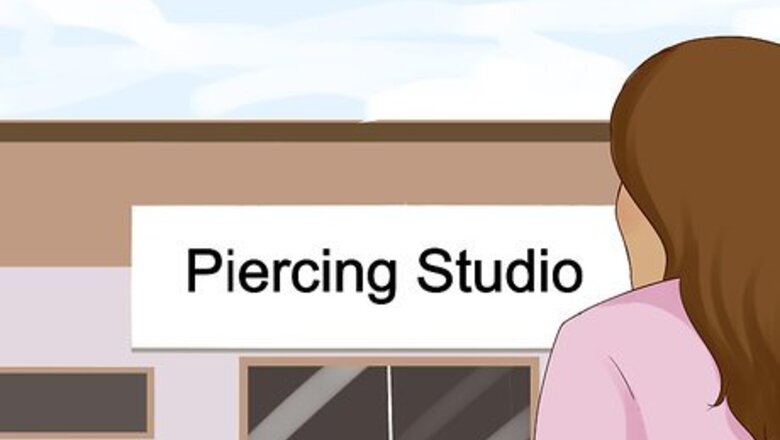
views
Preparing for a Safe Septum Piercing
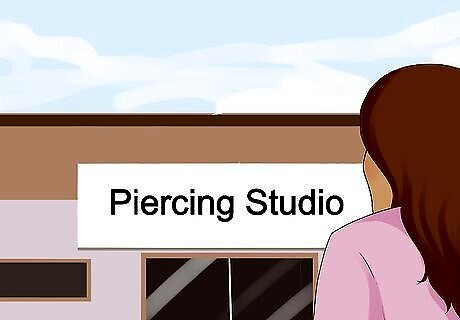
Find a professional piercing studio with a good reputation. Unlike ear piercings, which can be done in many department stores, nose piercings must be done in a tattoo or piercing parlor. Research studios that specialize in septum piercings online, and make sure to check studio reviews before settling on a place. Most countries have professional piercing associations that certify piercers who adhere to their policies. Make sure you choose a piercing studio certified by your country's association. Ask friends with septum piercings for their recommendations.

Test yourself for any metal allergies before getting a piercing. If you've never gotten a piercing before, you might have a skin allergy to common metals (like titanium or nickel). Talk with your doctor or a licensed dermatologist about receiving an allergy test before the piercing. Septum studs that cause allergic reactions must always be removed. When in doubt, choose hypoallergenic piercings.
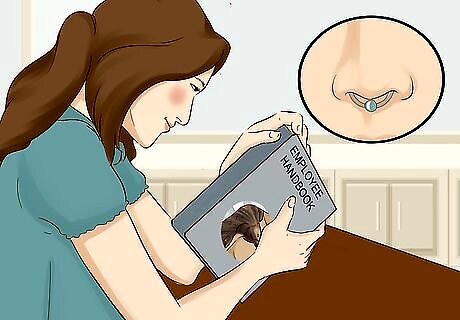
Decide whether a septum piercing is compatible with your work environment. In some workplaces, septum piercings can be a liability. Avoid getting your septum pierced if your job requires lots of physical labor or advises against jewelry. Consult your employee handbook or talk with your employer if you are unsure what your dress code allows. If piercings are not allowed at your work, you may be able to flip your piercing up while working so it is not visible or find other ways to hide it.

Don’t pierce your septum during allergy seasons. If you're prone to hay fever, wait until your seasonal allergies have passed before getting your piercing. Keeping your nose clean during the healing process is key to preventing infection, and runny noses makes piercing care difficult. The same goes for colds: wait until you've recovered completely and your stuffy nose is gone before getting your septum pierced. If you are allergic to specific things, like animals or flowers, avoid anything that would trigger your allergies while your piercing heals.
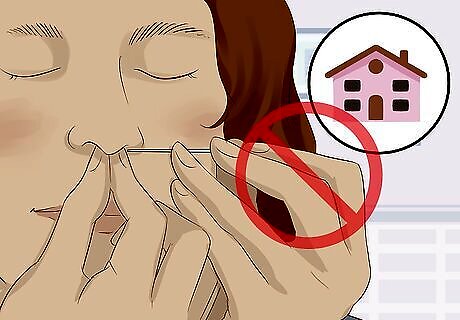
Avoid piercing your septum at home. Self-piercing your body in general is dangerous but especially so for septum piercings. Piercings in your nose are prone to infection. A trained professional will use sterilized tools and piercing techniques that cannot be properly replicated at home.
Getting Your Septum Pierced Professionally
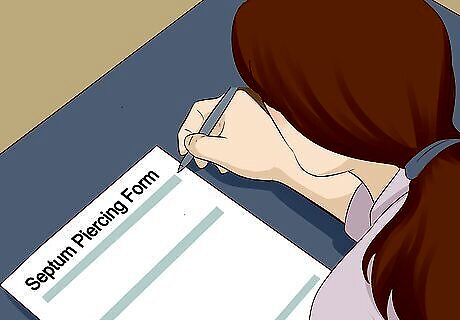
Arrive early to fill out paperwork. Most reputable piercing studios will require clients to bring in a photo ID and go through paperwork before the appointment. Your paperwork might outline the procedure, go over potential risks, and ask for a client's health history or pertinent medical information. Plan to show up 10-15 minutes early for your appointment. Let your piercer know about any medications you are taking, which can change your septum piercing's healing time.
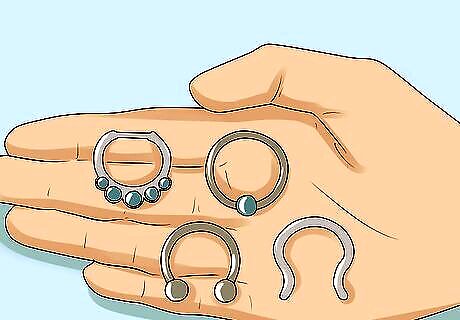
Choose the stud you want to use for the piercing. Your first septum piercing can come in a variety of styles. Circular barbells, captive bead rings, septum clickers, and septum retainers are all popular options. Know the difference between each type to make an educated choice: Circular barbells: a simple bar piercing with a metal ball or spike at the end. Captive bead rings: a separable ball that goes between both ends of the ring. Septum clickers: a straight rod with a hinge that latches onto the piercing's rod. Septum retainers: a curved piercing that can be flipped up or down.
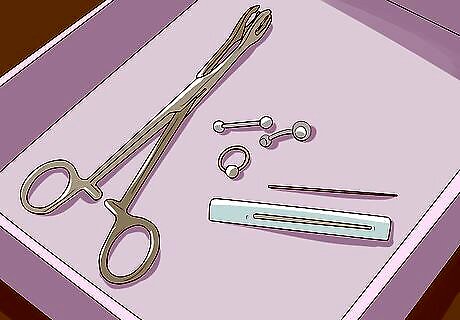
Make sure your piercer uses sterile equipment. Ask your piercer if they are using sterile, disposable equipment. The answer will always be yes if your piercer is professional. Do not trust a piercer who reuses needles or uses unclean equipment.
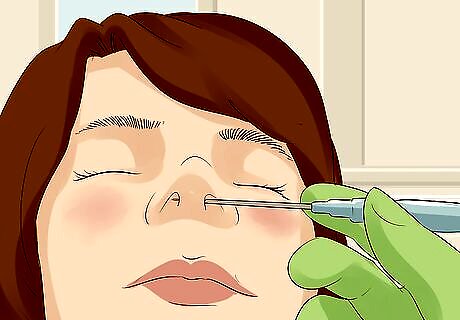
Stay as still as possible while your septum is being pierced. Sudden movements can cause an imprecise piercing. Avoid jerking around or turning your head while your piercer is working. Do not move until your piercer has finished. If you are nervous, practice deep breathing or bring along a friend for moral support.

Prepare for minor pain as your septum is pierced. Though not the most painful piercing, many describe septum piercings as an unpleasant sensation. Some describe their pain as being hit in the nose. Keep the pain in mind as your piercer works so you are not surprised when it comes. Ask your piercer whether they use numbing cream or cold packs to soothe the piercing pain.
Keeping Your Piercing Clean
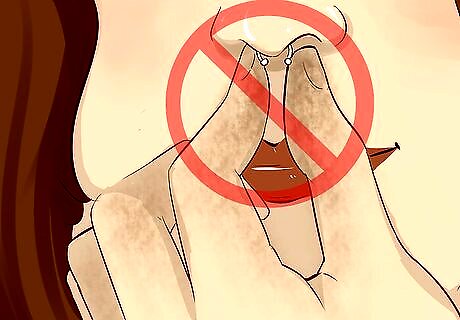
Avoid touching your piercing with dirty hands. Repeatedly touching your piercing with unwashed hands can infect your septum. Wash your hands with soap and water before handling your piercing. Touch the piercing as little as possible during the first few weeks to speed up the healing process. Do not play with your septum piercing. Fiddling with your piercing will delay the healing process and increase the risk of infection.
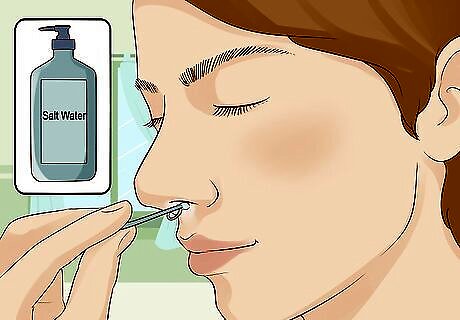
Wash your piercing with salt water daily. Use salt water or a saline solution to kill off infections before they begin. Dip a cloth in the saline solution and rub it on and around your piercing. Pour a small amount of saltwater into a bowl and submerge your nose entirely to thoroughly clean out your nose. Most piercing parlors will have a saline solution available for free or a low price.

Rinse your piercing with cold water to remove crusting. A crust may form around your septum piercing after several days. Follow up a saltwater cleaning with cold water applied directly to your nose. To prevent buildup, watch for and clean away your nose crust daily.

Do not clean your piercing with alcohol-based solutions. Alcohol solutions can dry out the skin surrounding your piercing and make it irritable. Check any soap or cleaning solution labels for alcohol. Until your septum has healed completely, keep it away from alcohol cleaners.

Wait for 6 to 8 months before frequently removing your septum piercing. Septum piercings take at least 6 months to heal, although it will only remain tender for around 2 to 3 weeks. The piercing will be fully healed when it is no longer tender and does not close after you have removed the septum piercing for an extended amount of time. Continue cleaning your septum piercing every day after it has healed to avoid unpleasant smells.
Caring for Infected Piercings
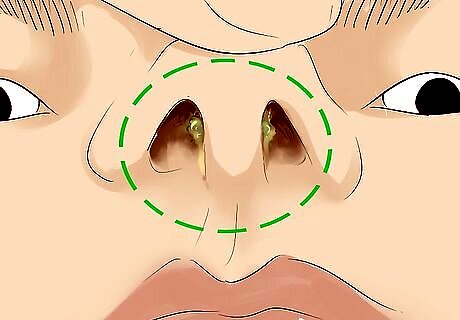
Watch for green or yellow nose secretions. Clear nose secretions are normal during the first few weeks after getting your septum pierced. Greenish-yellow liquid, or pus, indicates infection. Check for a bright discharge color as a sign of infection. Pus accompanied by a lump near the piercing site is another infection symptom.

Apply a cold pack to reduce swelling. Infected piercings may swell or become irritated, but cold packs can reduce inflammation. Never apply ice directly to the skin, which can worsen the irritation. Instead, wrap your cold pack in a cloth and press it on or under your nose. Place the cold pack on your nose in 20-minute increments once every 2 to 4 hours or as needed.

Use herbal remedies to soothe irritated skin. Chamomile, lavender, and tea tree oil can all lower inflammation. Apply one or two drops of essential oils near your nose or steep a cool cloth in herbal teas to ease the pain of your infected piercing. Dilute the essential oils with a carrier oil if you are sensitive to strong scents.

Seek out medical advice if you think your piercing is infected. Some piercing infections require antibiotics or other professional help to heal. If symptoms persist for over forty-eight hours, you contract a fever, or you feel intense pain when touching the piercing, contact a doctor immediately. If the infection persists after medical treatment, contact your piercer to discuss possible removal options. You might re-pierce your septum several months after your septum has healed.


















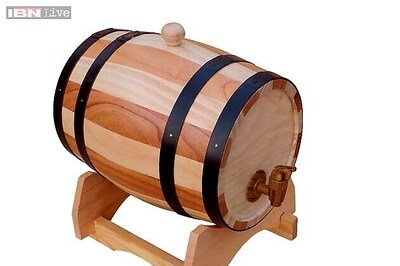

Comments
0 comment